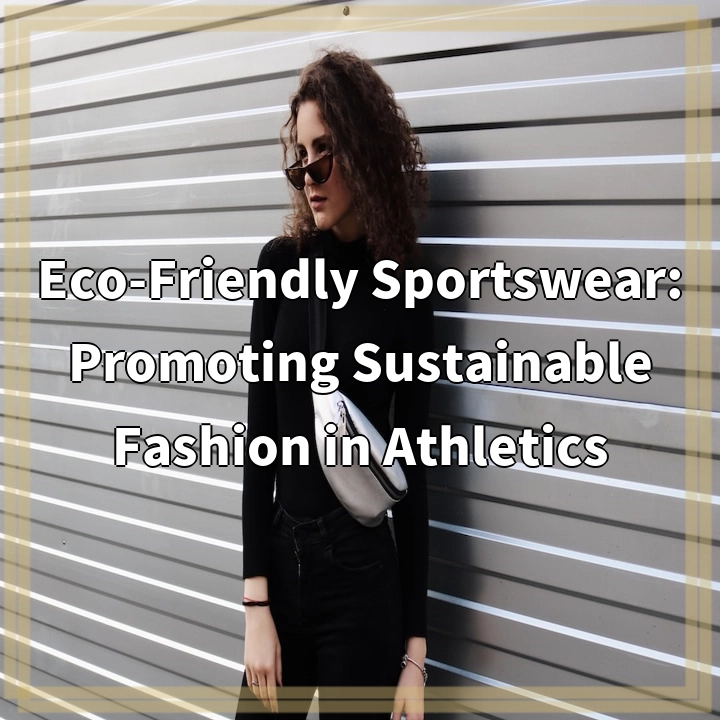
What is Eco-Friendly Sportswear?
Eco-friendly sportswear refers to athletic clothing and accessories that are designed and manufactured using sustainable materials and production methods. The aim is to reduce the negative environmental impact of the fashion industry while still providing high-performance and stylish options for athletes.
Real-World Problems Associated with Eco-Friendly Sportswear
Eco-friendly sportswear faces several challenges and obstacles in its widespread adoption. These issues include:
1. Limited Availability
The availability of eco-friendly sportswear options is often scarce compared to conventional sports apparel. Many major brands still prioritize cost-effectiveness and mass production over sustainability, making it difficult for consumers to find eco-friendly alternatives.
2. Higher Price Points
Eco-friendly sportswear tends to be priced higher than conventional alternatives. This higher price point is often attributed to the use of sustainable materials, ethical labor practices, and environmentally-friendly manufacturing processes. This can deter some consumers from purchasing eco-friendly options, especially those on a tight budget.
3. Performance and Durability Concerns
A common criticism of eco-friendly sportswear is that it may not offer the same level of performance or durability as traditional athletic wear. Although advancements have been made in developing sustainable materials with athletic properties, there is still room for improvement to match the performance benefits of synthetic materials.
4. Lack of Education and Awareness
Many athletes and consumers are not fully aware of the environmental impact of the fashion industry and the importance of choosing sustainable options. Educating individuals about the benefits of eco-friendly sportswear and highlighting the environmental consequences of fast fashion can play a vital role in driving demand and change.
5. Recycling and End-of-Life Options
Another challenge faced by eco-friendly sportswear is the lack of recycling infrastructure and end-of-life options. Sustainable materials used in sportswear, such as recycled polyester or natural fibers, should ideally have a circular lifecycle. However, the availability of proper recycling programs and facilities is limited, causing these materials to end up in landfills, hindering the overall sustainability goals.
In conclusion, while eco-friendly sportswear holds great potential for promoting sustainable fashion in athletics, several real-world problems need to be addressed. By increasing accessibility, improving affordability, enhancing performance, raising awareness, and developing recycling initiatives, the adoption of eco-friendly sportswear can effectively contribute to reducing the negative environmental impact of the fashion industry.

Solutions to Challenges of Eco-Friendly Sportswear
Addressing the real-world problems associated with eco-friendly sportswear requires proactive measures and collaborative efforts. Some potential solutions include:
1. Increasing Availability and Accessibility
Companies and retailers can work towards expanding their offerings of eco-friendly sportswear. This can be done by partnering with sustainable fashion brands or adopting sustainable practices in their own manufacturing processes. Online platforms and dedicated sections in stores can also help improve accessibility for consumers seeking eco-friendly options.
2. Enhancing Affordability
Brands and manufacturers can explore ways to reduce the cost of eco-friendly sportswear. This may involve investing in more efficient production methods, scaling up production to achieve economies of scale, or sourcing sustainable materials in a cost-effective manner. The goal is to make sustainable options more accessible to a wider range of consumers.
3. Research and Innovation
Continued research and development efforts can help improve the performance and durability of eco-friendly materials used in sportswear. By investing in technological advancements and innovation, sustainable alternatives can be developed that match or even exceed the performance characteristics of traditional athletic wear.
4. Education and Awareness Campaigns
Raising awareness about the environmental impact of the fashion industry and the benefits of choosing eco-friendly sportswear is crucial. Education campaigns targeting athletes, consumers, and industry stakeholders can help foster a greater understanding of the issues at hand and encourage more informed purchasing decisions.
5. Circular Economy Initiatives
Efforts should be made to create and improve recycling programs and facilities specialized in handling eco-friendly sportswear materials. Implementing effective end-of-life options, such as recycling or upcycling, can help minimize waste and promote a circular economy for sustainable fashion.
By implementing these solutions, the fashion industry can make significant progress in promoting and supporting the adoption of eco-friendly sportswear. Collaboration between brands, consumers, policymakers, and environmental organizations is key to drive positive change and make sustainable fashion the norm in athletics.















